This is Classic the Universe Best Easy Listening Album of All Time
PRESENTS
The 40 Most Groundbreaking Albums of All Time
SPONSORED BY 
From Kanye West to Woody Guthrie, the monumental musical statements that changed the world
2008
Kanye West
808s & Heartbreak
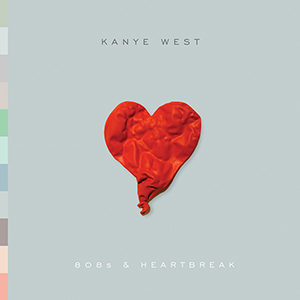
Kanye West's Auto-Tune-heavy, emotionally naked fourth album came after a brutal year during which his mother died and his engagement broke up, but the album's cavernous sound and exposed-soul lyrics confused even those who had been aware of West's recent trials. Its core aesthetic was like nothing in hip-hop: freshly butchered feelings enumerated in detail, but masked by digital processing; beds of spare synths used to balance a mix of singing and rapping. However, over time it served as a new template for up-and-comers in hip-hop and R&B. Drake cited West as his budding sound's "most influential person" when he was hustling mixtapes, while artists like Future further tweaked the idea of using Auto-Tune as a way to convey emotions that evoke too much feeling when spoken of explicitly.
2007
Radiohead
In Rainbows
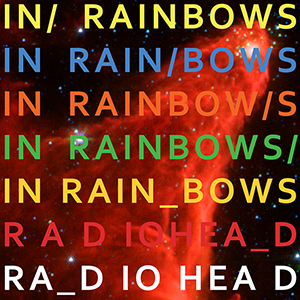
OK Computer might be Radiohead's best album, and Kid A their most musically innovative, but In Rainbows shook the music industry's very infrastructure. The band ended the four-year wait following 2003's Hail to the Thief by announcing simply on their official site, "the new album is finished, and it's coming out in 10 days." With that sentence, Radiohead changed the promotional cycle in the digital age. Ever since In Rainbows arrived in everyone's inbox simultaneously and listeners experienced those torrid first notes of "15 Step" together, many artists have tried to "pull a Radiohead," with Beyoncé and U2 succeeding in delivering their music in a similarly egalitarian manner. The album's "pay-what-you-want" offer that allowed diehards, casual fans and curious listeners to put their own value on music was just another step forward in questioning how the music business does business.
1992
Mary J. Blige
What's the 411?
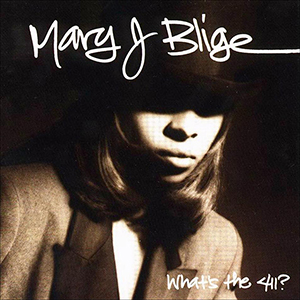
When Mary J. Blige signed to Uptown Records, she began working with an up-and-coming producer named Sean "Puffy" Combs, and together they forged the idea of what came to be known as "hip-hop soul" —music with the emotional heft of the former, the sample-heavy breeziness of the latter, and the pop appeal of both. The combination — not to mention Blige's powerhouse voice, which added extra gravitas to songs like the feather-light "Real Love" — resulted in cross-generational success. In the immediate, 411 inspired the likes of Mariah Carey and Madonna to incorporate more hip-hop sensibilities into their brands of pop; but even two decades later, tracks like Ariana Grande's "Problem" and Charli XCX's "Boom Clap" operate in Blige's swaggering shadow.
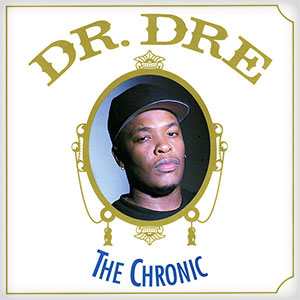
Everything you thought you knew about hip-hop changed in a flash, thanks to an album from a former West Coast electro producer. The Chronic reinvented the West Coast's sound from the baby boomer's Beach Boys to the Death Row bad boys overnight. Dr. Dre's lush, studio-recorded instruments seemed huge compared to the last decade of drum machines and sample collections. The album sold a world to white America that it had never really seen before, and packaged it with a soundtrack so funky there was no avoiding it. It was both raw, uncut underground and carefully composed pop. If Public Enemy confronted white America, The Chronic seduced it. For the first time ever, hip-hop's mainstream and America's were one.
1992
Various Artists
Artificial Intelligence
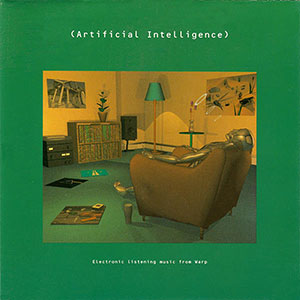
A seemingly conservative maneuver that turned out to be cutting edge. In a world of house and techno driven by dance-floor whims — especially in rave-addled England — Warp Records were driven by the bottom line when they decided to market a "home listening" version of electronic music: Comfortable, older, middle-class types liable to buy an living room record were a more reliable audience for CD sales than trend-chasing kids. However Artificial Intelligence served as a handy gathering point for some of electronic music's most experimental minds — Aphex Twin, Autechre, Richie Hawtin, Alex Paterson from the Orb — a brainy exercise that spawned what we now know as "intelligent dance music." While AI anticipated the explosive markets for genres like downtempo and trip-hop; the blipping, sputtering, ambient worlds of IDM musicians would influence everyone from Radiohead and Björk to Skrillex and Deadmau5.
A History Like Nothing Else
The Indian® Scout™ was one of history's great motorcycles—many people called it the best bike ever made. It won countless races, including the first-ever Daytona 200 in 1937. It was a bike like nothing else.
See the Bike >
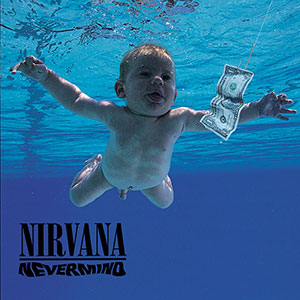
Nirvana weren't the first indie heroes to sign a major label (the Replacements, Tim, 1985), or the first to subsequently hit Number One (R.E.M., Out of Time, 1991), but the Washington trio's sophomore album was the one that forever blurred the lines between pop sheen and DIY pathos. Flying the independent Sub Pop logo alongside DGC's corporate shield — and powered by Kurt Cobain's golden scream — Nevermind shuffled the major/indie ecosystem, brought shine to punk and punk to the charts, transmitted a post-feminist sensitivity to the masses, bridged MTV and college radio, provided aphoristic angst for sullen teens to replicate in school notebook margins, altered the way engineers recorded bands and publicists marketed them, commodified discontent, kicked off an archetypal music myth for the late 20th century, spurred an alt-rock gold rush that resulted in hundreds of bands earning record contracts and impacted nearly every sad guitar player that followed. Not bad for a $287,000 advance.
1988
Public Enemy
It Takes a Nation of Millions to Hold Us Back
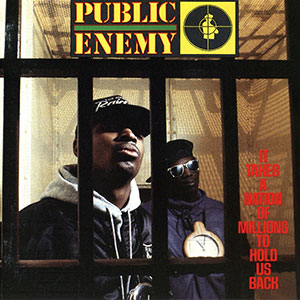
While conscientious writing was already a part of the rap game, for Public Enemy's Chuck D, it was the game. By putting his group's message up front — pro-black, anti-drug, pro-revolution, anti-war — it cemented hip-hop itself as part in the lineage of black revolutionary literature (everyone from Tupac Shakur to Killer Mike owes a debt of gratitude). The revolution wasn't just political. The Bomb Squad's shrill, punk-provocative production underlined the urgency, expanding what you could do with samples, layering funky breaks until they became weapons of noise and chaos.
1984
Run-D.M.C.
Run-D.M.C.

Not only the first classic hip-hop album, but a sharp breaking point from the buoyant post-disco rhythms and future-shocked electro that dominated the genre's first five years on record. The Hollis, Queens crew did nothing short of reinvent the still-new style in their own image: hard, raw, in your face and catchy enough to challenge anything else in pop. The rap-rock fusion "Rock Box" stands as a foundationally transformative moment for American culture itself, while the earth-shaking one-two punch of "Sucker MCs" and "It's Like That" (which had been released together in a landmark 1983 single) segued from Herculean MC grandstanding to complex social realism. The album is minimal and stark, but still feels like an audacious good time.
1983
Various Artists
Now That's What I Call Music

While compilation albums were nothing new, the U.K.'s Now That's What I Call Music! series was born of a simple idea: What if there was a hits album where tracks' running times weren't edited for the purposes of making LP space? The 30 songs on Now's first volume filled two LPs, and the albums' compilers took enough of a wide-lens view on the idea of "pop" to offer unexpected left-turns: Culture Club, Rod Stewart, Mike Oldfield and the Rock Steady Crew all shared a side. The American version launched in 1998 with an album starring the Backstreet Boys and Radiohead. Accordingly, the series has remained possibly the only safe bet, weathering 30 years of changes in the music industry: The 50th American edition (released this year) was the 18th in the series to debut at Number One — only the Beatles have more.
1982
Michael Jackson
Thriller

It's hard to imagine the present-day musical landscape without Thriller, which changed the game both sonically and marketwise. The album's nervy, outsized blend of pop, rock and soul would send seismic waves throughout radio, inviting both marquee crossovers (like Eddie Van Halen's guitar solo on "Beat It") and sneakier attempts at genre-meshing. The album's splashy, cinematic videos — from the John Landis-directed short film that promoted "Thriller" to the West Side Story homage accompanying "Beat It" — legitimized the still-nascent form and forced MTV to incorporate black artists into its playlists. Its promotional strategy, which led to seven of its nine tracks being released as singles, raised the bar for what, exactly, constituted a "hit-laden" LP. Beyond breaking ground, it broke records, showing just how far pop could reach: the biggest selling album of all time, the first album to win eight Grammys in a single night and the first album to stay in the Top 10 charts for a year.
1977
Throbbing Gristle
The Second Annual Report
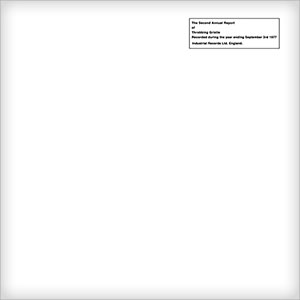
Part heady avant-garde improv, part well-considered Molotov cocktail, all ways disorienting, Throbbing Gristle's debut steamrolled a new path for underground noiseniks by eschewing most of the formal rules of rock music — drums, guitars, melody and, on Side B, pulse entirely —going directly for the primal appeal of distortion. "Industrial Music for Industrial People" read the tagline for the band's own Industrial Records, spawning a genre fueled on grinding, mechanical terror and provided influence for everyone from Nine Inch Nails to Aphex Twin. Built on disturbing samples, disturbing electronic textures, and disturbing live recordings, Second Annual Report employed the LP as a medium of portable transgression.
1976
The Ramones
The Ramones
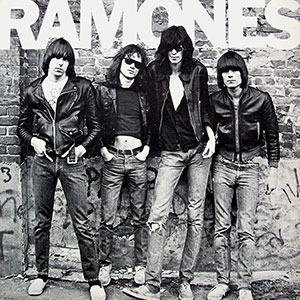
Not only was The Ramones one of the first, finest and clearest documents of a still-forming genre — punk rock — it was one of the first albums to combine market-tested pop music with stuff that most people would call "noise" (a gesture that, in the long run, had more to do with Weezer than Black Flag). Add to that the radical notion that their constraints (short songs, no guitar solos, leather jackets and jeans, "I don't wanna"-style lyrics) were also the source of their freedom, and you get an album that rejected tradition in part by embracing it.
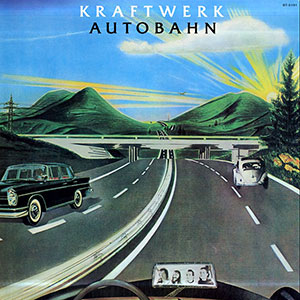
Kraftwerk's savvy use of pop elements smuggled in a Trojan horse of electronic experimentalism to the broadest audience possible. Most pop genres that followed would incorporate this innovation — new wave, hip-hop, techno and contemporary EDM among them. The German group pulled away from rock music's formal identity while channeling its to-the-jugular pop spirit on Autobahn. They focused on the pulse first and foremost, slowing the tempo down to match the title track's concept, reflecting the feel and sounds of driving down the German autobahn. The concept's irreverence was balanced by the neutral German imitation of Beach Boys harmonies. Pop music had escaped rock & roll, and the electronic pulse would guide the decades that followed.
1973
Various Artists
The Harder They Come
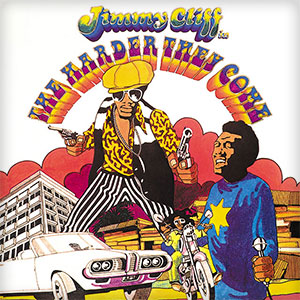
Before the soundtrack for The Harder They Come, reggae's success in America was limited to the occasional fluke 45 (e.g., Desmond Dekker's "The Israelites") and appropriative novelties like the Beatles' "Ob-La-Di, Ob-La-Da." While the songs on it may have been new to an American audience, some of them had been around for as long as five years — an eternity when it comes to pop music. In turn, the soundtrack served not so much as a venue for a hot new sound, but a diplomatic introduction to something that had been percolating for years. "Jimmy [Cliff] was always supposed to choose the music for the soundtrack, and we were coming up to the deadline," director Perry Henzel once told an interviewer. When Henzell asked Cliff to get on it, Cliff said "no," at which point Henzell got into bed with a notepad and started running the film back and forth in his head, writing down song titles. "It's the best weekend's work I've ever done," he said
1971
Marvin Gaye
What's Going On
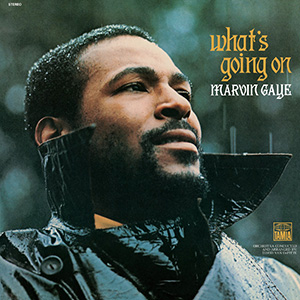
The party line on Gaye's 1971 album is that it was the first time soul music approached the condition of art — as though Motown's pocket symphonies didn't require as much wit and invention as any of the more exploratory music contained herein. What the album did do, however, was take music mostly associated with showmanship and personal pain and recast it as music of social and reportorial insight — a shift that not only prefigured the casual, ear-to-the-ground persona of singers like Erykah Badu, but Nas, Common and an entire universe of black musicians whose concerns don't stop at the studio doors.
Designed Like Nothing Else
One look at that leaned-forward tank and you know the Indian® Scout™ is a bike that got all the details right. It's been years in the making, but the Indian Scout is back. And it's designed like nothing else.
See the Bike >
1971
Carole King
Tapestry
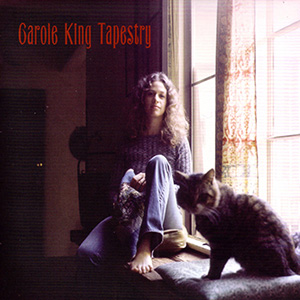
This blockbuster's 15 weeks at Number One — a record for a female solo artist that held for more than 20 years — helped establish the idea of the Laurel Canyon singer-songwriter as a commercial force, and that's probably its least interesting accomplishment. A decade earlier, King's songwriting collaborations with then-husband Gerry Goffin expanded the emotional palette of pop romance. In 1971, not yet 30, she showed how those pop sentiments could remain relevant for adults, revisiting the lingering uncertainty of "Will You Still Love Me Tomorrow" and expressing even-tempered resignation on "It's Too Late." Not only did King secure a foothold for women as hit songwriters, but as a singer, she broke down the double-standard that allowed men like Bob Dylan to use their imperfect voices to express personality, but constrained women to harsher standards of precision.
1970
The Allman Brothers Band
Idlewild South
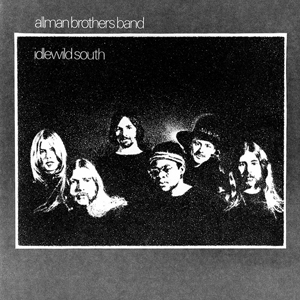
On their second album, the Allman Brothers transmogrified from mere blues-rockers to an assemblage creating an entirely new kind of Southern music. It helped to have the preternaturally sweet slide guitar of brother Duane, but Idlewild South offered open-source blueprints for the Allmans' longhaired brethren across the region and beyond, including Eric Clapton, who promptly drafted Duane for Derek and the Dominos' Layla and Assorted Love Songs. Idlewild South was packed with Duane's Muscle Shoals-weaned smarts too, turning hippie boogie to shimmering AM gold. No one ever quite replicated Allman and Dickey Betts' soaring guitar harmonies, but Idlewild South enabled (in part) Lynyrd Skynyrd, the Black Crowes, almost every jam band, Kid Rock and whoever is playing for beer and glory tonight at the nearest biker bar.
1970
Miles Davis
Bitches Brew
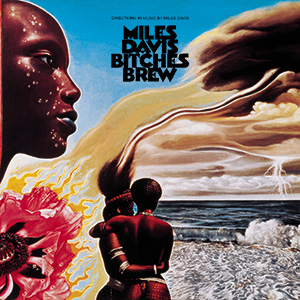
Miles Davis had recorded electric jazz before, but Bitches Brew was something else: jazz-rock. Accepting the rhythmic and improvisatory challenges of Jimi Hendrix, James Brown and Sly Stone, the trumpeter, over the course of several sessions, goaded multiple large combos to use a shifting funk pulse to guide them toward explorations more open-ended than even the freest of jazz players had attempted. These extended takes gave producer Teo Macero plenty of material to snip and splice together, a technique he may have learned from musique concrète, but helped the jazz world catch up with a discovery rock had made some time before: The studio allows for far different possibilities of creative freedom than the stage.
1970
Black Sabbath
Black Sabbath
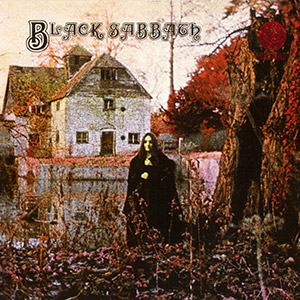
When Black Sabbath released their self-titled debut in 1970, they didn't think they were starting a movement. And neither did critics: Lester Bangs described Black Sabbath as "just like Cream! But worse" in Rolling Stone. But their sludgy take on psych-blues became the core of what's now known as metal — whether modified by "thrash," "prog" or even "glam." Part of the influence lies in the way Tony Iommi's guitars were tuned down, the result of a freak accident that resulted in him shearing off two of his right hand's fingertips and having to play with their tenderness in mind. That contributed to a doom-filled atmosphere that was only enhanced by frontman Ozzy Osbourne, who was still refining his "prince of darkness" persona, and song titles grasping toward signifiers of evil. The album's seediness proved inspirational to generations of musicians, who used Black Sabbath's ideas of soot-covered rock & roll — making it faster, slowing it down even more, adding orchestral flourishes — to create not just a genre, but a musical movement.
1969
Grateful Dead
Live/Dead
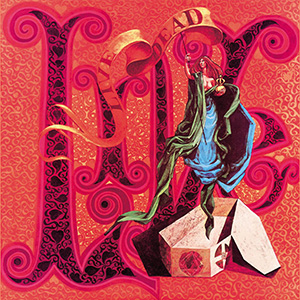
Establishing group improvisation in rock, Live/Dead was (like James Brown's Live at the Apollo) music that could only be created on a stage. Not merely an afterthought to a studio recording, the double-LP was a testament to the power of live music and, more specifically, an advertisement for the Dead's ever-changing show. Built around a seven-part song suite, including two side-long jams, an 11/8 double-drummer groove, modal weavings, cryptic lyrics, gentle Martian gongings, a crowd-frothing rave-up, feedback squelches, an a cappella reprise and a deep sense of architecture, Live/Dead seeded musical vocabularies for jammers from Phish to Sonic Youth. As the first in a flood of live Dead releases, it began to map out strategies for entrepreneurial juggernauts from Pearl Jam to the Dave Matthews Band, an advertisement for deeper pleasures that might only be achieved with the additional purchase of one (or many) concert tickets.
1969
The Watts Prophets
Black Voices: On the Street in Watts
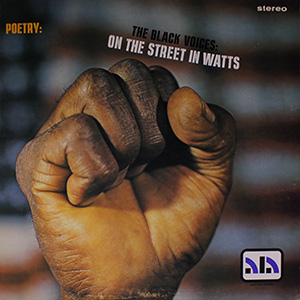
A path-finding moment in the pre-history of hip-hop, the debut album from this Los Angeles poetry collective — full of minimalist beats and brilliant wordplay nearly a decade before the first recorded rap song — still feels relevant 45 years later. The Watts Prophets (Amde Hamilton, Otis O'Solomon and Richard Dedeaux) dropped smolderingly radical bowshots ("They Shot Him") as well as moments of somber introspect ("The Days, The Hours"). The finest track on The Black Voices is its funniest, the eminently sample-ready, five-second salvo "The Meek Ain't Gonna" in which Hamilton explodes with the single line "The meek ain't gonna inherit shit… because I'll take it!"
1969
King Crimson
In the Court of the Crimson King

Never had rock music been so fussy or so technical, forgoing the pleasure of the moment for the rarefied pursuits of multi-song suites and breakdowns in time signatures no teenager would dare try to do the mashed potato alongside. For the first prog-rock LP, an Atlantic Records ad run in Rolling Stone in late 1969 claimed it featured the heaviest riffs on record since Mahler's 8th Symphony. "I know it had to cost ten thousand pounds to make," the ad, written by Pete Townshend, proceeds. "I can't tell if it's worth it." Everyone from Tool to Muse to the Mars Volta would probably say "yes."
1969
Isaac Hayes
Hot Buttered Soul

After spending nearly a decade with Stax co-penning soul hits for Sam & Dave, Isaac Hayes released his own solo album in 1968, which bombed. It was a year of tumult for Stax: Otis Redding has just passed away, and their entire catalog was being absorbed by Atlantic Records. Hayes reluctantly agreed to record another LP for Stax, with the caveat of having complete creative control — a rare opportunity for a soul musician at the time, but after Hot Buttered Soul's wild success, a necessity. It became soul music's first album-length auteur statement: four tracks spread over 45 minutes that blended pristine production, Memphis soul courtesy of the Bar-Kays, orchestral flourishes and one of the richest, bluesiest voices ever. It immediately raised the bar for soul, funk and R&B, and it pushed Marvin Gaye and Sly & the Family Stone to respond by releasing their own landmarks shortly after.
1968
The Byrds
Sweetheart of the Rodeo
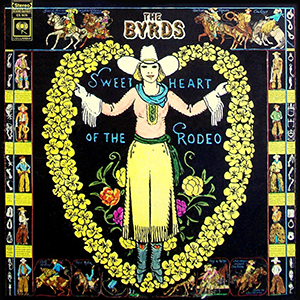
Rock's late-Sixties psychedelic sojourn was brought to a screeching halt with the August 1968 release of the first country-rock masterpiece, an album whose reverberations can still be heard in the hard-rocking sounds of virtually every current country hit. The commercial success of the Eagles, America, the Doobie Brothers are all attributable to fledgling Byrd Gram Parsons's resolute belief in the cosmic power of real country music. Parsons fan Elvis Costello brought the word back to the punks on Almost Blue; the Blasters, Long Ryders and even X added a twang to their sound; and "cowpunk" became a thing. Likewise, Uncle Tupelo's 1990 No Depression album; band spinoffs Wilco, Son Volt and Bottle Rockets; and countless subsequent alt-country advocates can all be traced back to Sweetheart.
1967
Loretta Lynn
Don't Come Home a Drinkin' (With Lovin' on Your Mind)
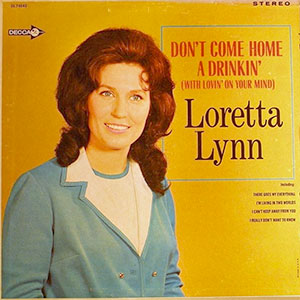
Loretta Lynn's seventh album was named for her first Number One country hit, a feminist volley that established her persona as a country gal earthy enough to acknowledge the indignities she and her down-home sisters faced and fearless enough to stand up for herself. There had been no-nonsense women country stars before, of course, but Kitty Wells and Patsy Cline (to choose just two obvious antecedents) never had a gold album. And Lynn's new commercial clout was a direct result of her songwriting talent: Her name is on the hit that anchors this album, which not only established her as a creative force but opened up new possibilities in a male-dominated market for generation of female country tunesmiths to follow, from Dolly Parton to Taylor Swift.
Engineered Like Nothing Else
The new Indian® Scout™ started as a clean sheet design. The engineers took the heart and soul of the concept and translated it into metal designed to go like nothing else.
See the Bike >
1967
The Beatles
Sgt. Pepper's Lonely Hearts Club Band
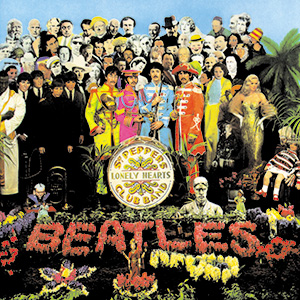
A report in The New Yorker from June 24th, 1967, quotes a disc jockey named Joe O'Brien who quotes his son, then a freshman at Yale, saying that the day Sgt. Pepper's came out, the entire Yale (and Harvard) student body bought copies. "This album is not a teenage album," he added. "This album is a cantata." Sgt. Pepper's wasn't the first album to blend rock music with high art, but it was probably the first time that musicians of the Beatles' stature and popularity (if there even were musicians of their stature and popularity before them) decided to turn their back so completely on what had made them famous. Put positively, it was the first time the Beatles were free of the responsibility of being the Beatles. The irony is that no other album cemented them so firmly in the public's mind.
1967
The Velvet Underground & Nico
The Velvet Underground & Nico
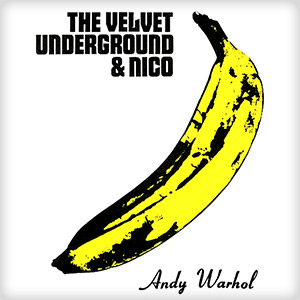
Listened to with five decades of perspective, the most shocking aspect of the Velvet Underground's 1967 debut aren't its taboo-busting songs about hard drugs and hard sex, but the songs themselves. And sometimes the noise. Combining Lou Reed's skills honed as a staff songwriter at Pickwick Records, the possibilities of John Cale's time exploring drones with La Monte Young and the austere, nearly cymbal-less drumming of Maureen Tucker, The Velvet Underground & Nico became a singular and slow-selling cornerstone in an alternative unfolding of rock history. Traces of the album that launched a thousand bands can be found in Reed's contemporaries like David Bowie and Iggy Pop, as well as successive generations of snotty aesthetes from proto-punks, punks, post-punks and art-rockers from Jonathan Richman and Patti Smith, to R.E.M. to modern indie rock. Mixing viola chaos with Bo Diddley beats and the odd song that could be played at a wedding, The Velvet Underground & Nico linked high art aspirations with rock & roll tenderness and discovered a new continent in between.
1966
Perrey and Kingsley
The In Sound From Way Out!
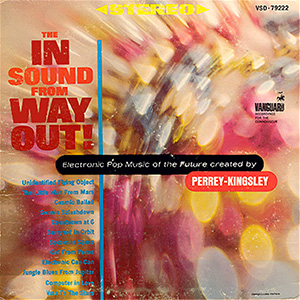
For the album widely considered the first commercial LP to be composed of electronic music, musician Jean-Jacques Perrey's synthesizer prowess was harnessed by arranger Gershon Kingsley's pop sensibilities. They positioned themselves as nothing less than messengers from the future: "Here is the electronic 'Au Go Go' that might be heard soon from the juke boxes at the interplanetary way stations where spaceships make their rest stops," read the liner notes. As it turned out, they were right. Well, not about the spaceship rest stops, but about what giddy, playful compositions like "Electronic Can-Can" and "Computer In Love" presaged — namely, a future where Daft Punk and Dr. Luke defined the parameters as much as any axe-wielding rocker, thanks to the Moog, the Ondioline and their digital descendants being just as likely to create chart-topping hits as guitars.
1966
The Mothers of Invention
Freak Out!
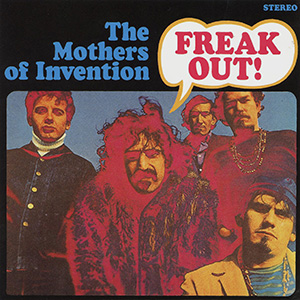
Released in June 1966, Frank Zappa's major-label debut was only rock's second double album (Bob Dylan released Blonde on Blonde a month earlier) but it set a higher bar for conceptual audacity. A sardonic, satirical, weirdly entertaining predecessor to kitchen-sink productions such as Sgt. Pepper's Lonely Hearts Club Band, Freak Out! combines Zappa's deep passion for midcentury blues, R&B and doo-wop with an aspirational affinity for avant-garde composers such as Edgard Varèse and Karlheinz Stockhausen. "The Return of the Son of Monster Magnet," the album's concluding side-long suite, wrote a permission slip for long-format trance percussion and tape manipulations explored by Can, their krautrock ilk and countless followers. Pop parodies like "Wowie Zowie" may not necessarily stand the test of time, but Zappa's tribal frenzies and consumerist parodies (hey there, "Weird Al") resonate still.
1966
The Beach Boys
Pet Sounds
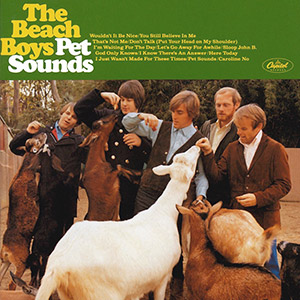
Pet Sounds' emotional ambiguities and rich arrangements brought a through-line of maturity to the adolescent fun, fun, fun of early rock. Though Brian Wilson's lush melancholia sold poorly on its release — Capitol rushed out both Beach Boys' Party! and a greatest hits collection to try to make up sales — the LP accumulated cultural cache with a quickness. The influence of Pet Sounds' huge palette of strings, horns, accordions, mandolins, vibraphones and harmonies could be heard almost instantly, not least via Beach Boys super-fan Paul McCartney, who said that "God Only Knows" spurred the Beatles' Sgt. Pepper's. Framing Brian Wilson as rock's premier singer / songwriter / arranger / producer / musician, the album likewise created the mystique (and self-indulgent temptations) of the pop auteur. A primo reference point for Radiohead, Nick Drake, My Bloody Valentine and anyone else looking to evoke the eternal teenage bedroom of the mind.
1965
The Beatles
Rubber Soul
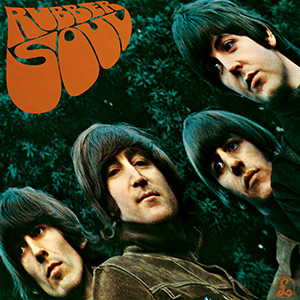
The Beatles didn't stop touring till the summer of 1966, but a year earlier, on Rubber Soul, you can hear them deciding to make the recording studio their home. The harmonies were trickier, the recording techniques more considered, and the instrumentation more varied as the band expanded upon the standard rock band format they'd established. Maybe the sitar stood out the most at the time, but dig all those pianos, often electronically tweaked, most notably to impersonate a harpsichord on "In My Life." The lyrics were both more acerbic and allusive, questioning yesterday's romantic optimism. You can say this represents "maturity," call it "art" or credit it for moving rock away from singles to album-length statements — but regardless Rubber Soul accelerated popular music's creative arms race, driving competitors like the Stones, the Beach Boys and Dylan to dismantle expectations and create new ones.
1965
The Paul Butterfield Blues Band
The Paul Butterfield Blues Band

Here is where white American kids got the notion they could play the blues. This Chicago quintet featured two stunning guitarists in Elvin Bishop and Mike Bloomfield — the latter, an early version of the skills-centric "guitar hero" model. Their debut album only reached Number 123 on the Billboard charts but it has reverberated through the decades. Backed by Howlin' Wolf's rhythm section (bassist Jerome Arnold and drummer Sam Lay), with Mark Naftalin on organ, Bloomfield played piercing runs against Bishop's driving rhythm, while Butterfield laid down storming harmonica and sang with authentic passion. Bloomfield played on Bob Dylan's Highway 61 Revisited the same year the album was released, but his boundless talent was marred by years of drug addiction. He died of a cocaine overdose in 1981.
1965
Bob Dylan
Bringing It All Back Home
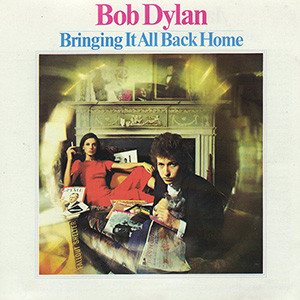
Sure, Dylan could have invented "folk rock" if he wanted to, but he left the construction of lush, profitable acoustic-electric pop to inspired followers like the Byrds. Anyone who'd ever heard an Elvis record could recognize that Dylan's shambling acoustic strum anchored nothing more or less than good ol' rock & roll — as played by America's most undeniably visionary folk musician, of course, which made all the difference. This also meant the few snobs still slotting all that electric pop racket as kiddie music had to get hip. The lyrics on his fifth album seemed to garble every bit of language Dylan had ever read or heard or otherwise ingested — from French symbolism to beatnik jive to advertising slogans to bad jokes to Old Testament verses to blues usages — into a frenzy of effusion, its dynamic ingenuity more important than any literal meaning you could discern. Bringing It All Back Home wasn't great because it showed rock lyrics could be "poetry," it was great because it showed rock lyrics could be anything.
1963
James Brown and the Famous Flames
Live at the Apollo
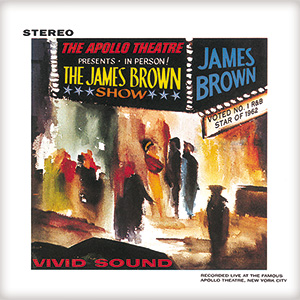
Syd Nathan, the head of King Records, thought it was a lousy idea. R&B fans don't shell out for live albums, he tried to tell his headstrong star, a hit single is what they dig. So James personally financed the recording of this blazing half-hour set at the storied Harlem theater, and soon radio DJs were playing entire LP sides on the air. Had this historical document done nothing more than introduce the wider world to the majestic, violent grace of a James Brown live performance, that'd be plenty groundbreaking. But as Live at the Apollo crossed over to the pop charts, it convinced both artists and businessmen that black music could thrive commercially not by making concessions to genteel white tastes.
1962
Ray Charles
Modern Sounds in Country and Western Music

In 1962, Ray Charles had more to offer country music than country music had to offer Ray Charles. For an R&B star with two recent pop chart-toppers to cross over into a genre often considered a commercial backwater with a niche rural audience was a stroke of counterintuitive genius. As the struggle for civil rights raged down South, this self-conscious exercise in integration reminded fans on either side of the racial divide of their common musical roots. Yet by embracing the new string-laden Nashville Sound rather than looking backward to the honky-tonks, Ray's fusion was as modern as the title promised, not just expanding the audience for country but expanding the idea of what country could be for future musicians.
A Ride Like Nothing Else
With its innovative, liquid-cooled V-twin, big, smooth spread of power and exceptionally low center of gravity, the new Indian® Scout™ serves up a ride like nothing else.
See the Bike >
1960
Babatunde Olatunji
Drums of Passion
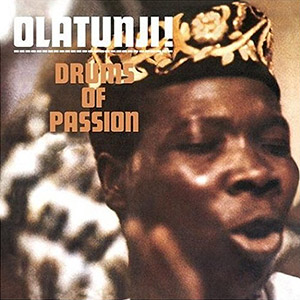
The 1960 album that launched "world music" in America (and inspired an infinite number of parking lot and college lawn drum circles) was created by Babatunde Olatunji, a Nigerian who moved to the United States in 1957 to attend college, and a cast of African-American singers and percussionists. "Jin-Go-Lo-Ba," the album's most memorable track, has been covered by Santana ("Jingo"), Serge Gainsbourg ("Marabout") and Fatboy Slim, among others. Jazz greats Herbie Mann, Max Roach, Randy Weston and Horace Silver all began to explore African music under its influence. And while Olatunji slipped below the radar during Afropop's 1980s heyday, he opened the Grateful Dead's 1985 New Year's Eve show, introducing the Americas' most visible African-music presence to a new young audience.
1959
The Dave Brubeck Quartet
Time Out
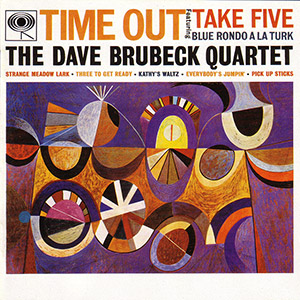
The crossover jazz smash Time Out was an early instance of a musician making something popular out of something that seemed very complicated — measures of 5/4 and 9/8 are all but undanceable in America. Dave Brubeck was an ambassadorial figure who spent a chunk of his career bringing jazz to the world on behalf of the U.S. State Department — a job that, in 1958, sent him to Turkey, where he heard some of the alluringly lopsided rhythms that ended up here. In truth, Brubeck had been flirting with uncommon time for years, but it wasn't until Take Five that it became an organizing principle. In turn, he made something familiar seem exotic and raw: in this case, cool jazz by way of Eurasian folk. Suddenly Istanbul seemed a little less farther away, or California, a little more.
1958
Ornette Coleman
Something Else!!!!
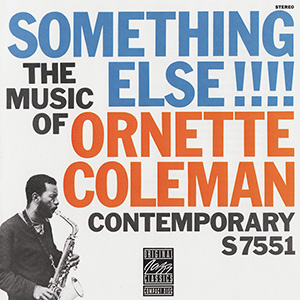
"Free jazz" starts here, more or less. The saxophonist would get much further out (what's that piano doing here?) but his first recording session established a new concept of improvisation: rather than expressing themselves within traditional song structures, musicians would have to act like spontaneous composers responding to what the other players had done. But Coleman came up on the R&B circuit, and if Something Else!!!! was more forward-thinking than much contemporary jazz it was also bluesier. One of Ornette Coleman's greatest insights was that sometimes the most avant-garde music is also the truest to its roots, that you can demolish traditional musical architecture without abandoning the sounds that made those traditions once feel so alive.
1955
Frank Sinatra
In the Wee Small Hours
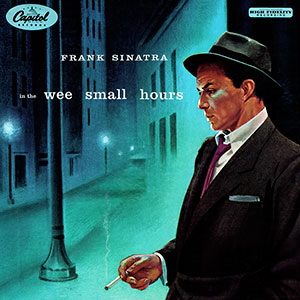
The cohesive tone, overarching concept and wild popularity of Frank Sinatra's In the Wee Small Hours helped establish the emerging 12-inch record format. The first Sinatra record specifically recorded to be a set of songs instead of a collection of singles helped solidify the idea of "album as a statement" — something we still adhere to in the digital age. After a healthy career singing charming, uptempo numbers for sweethearts of all ages, Sinatra decided to make an album so broken and lonely he couldn't even smile for the cover. Without it there is probably no Drake, no Smiths or any other artist who coped with their sadness by curling up on it like it was some kind of gigantic pillow. Certainly he'd recorded ballads before, but not in such concentration or such sustain, creating one of the first albums that understood the way some moods demand to be heard for more than three minutes at a time.
1940
Woody Guthrie
Dust Bowl Ballads
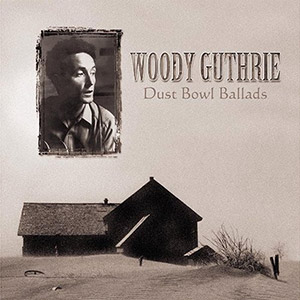
A blueprint for modern folk music, Woody Guthrie's Dust Bowl Ballads introduced the idea of the songwriter as a personality of his own. It was originally a pair of concept albums — among the first of those as well — in the very literal sense: two bound collections of six 78-RPM discs documenting the hardships of the 1930s dust ¬ storms in plain-sung song. The Oklahoma-born Guthrie pioneered music as reportage, offering details and pathos from the frontlines of an American disaster area. And though definitions of "frontlines" continues to mutate, Dust Bowl Ballads — both its wryness and its gravitas — defined the bard-on-the-scene responsibilities adhered to by Bob Dylan, Joan Baez, Bruce Springsteen, Public Enemy, the Clash and countless others. The media-savvy Guthrie initiated the age of songwriter-as-messenger, bending traditional melodies and country-blues techniques to anti-authoritarian purposes: punk-folk for the New Deal.
Nothing Else
Nothing else shows a passion for riding like the new Indian® Scout™. This custom, Wall- Of-Death Indian Scout, was built to launch the new bike and show that it's still "The Daredevils Choice."
See the Bike >
Source: https://www.rollingstone.com/interactive/most-groundbreaking-albums-of-all-time/
0 Response to "This is Classic the Universe Best Easy Listening Album of All Time"
Post a Comment